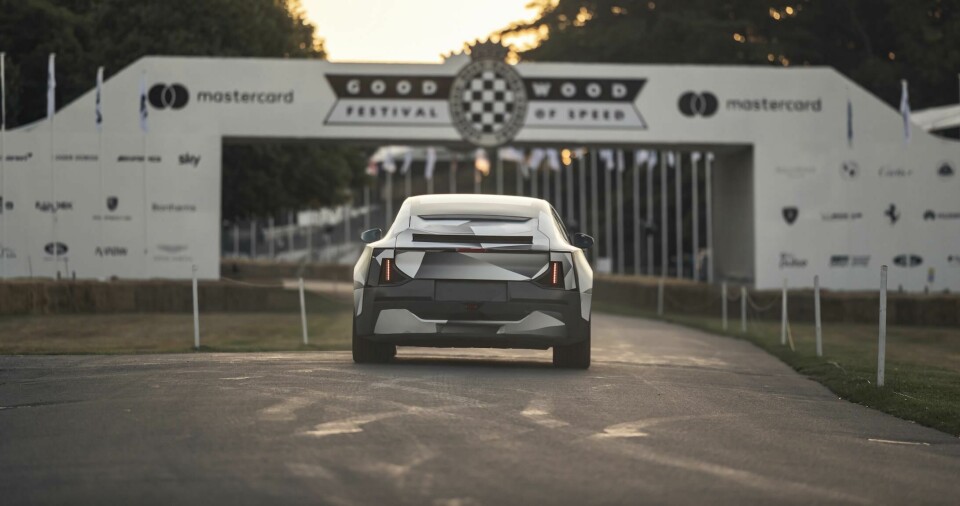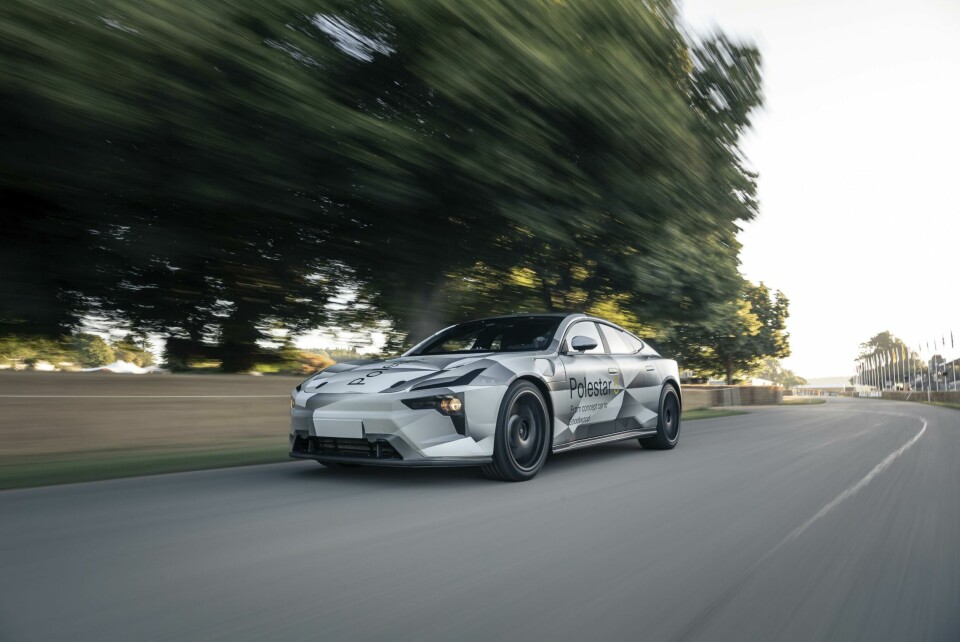
Maximilian Missoni talks Polestar 5 design
Car Design News joined Polestar’s design lead Maximilian Missoni at the Goodwood Festival of Speed to discuss the new ‘5’ prototype, the influence of the Precept concept, and life as a public company
Over the weekend at the Goodwood Festival of Speed — and just before Thomas Ingenlath and company rang the opening bell on the NASDAQ stock exchange to mark its public listing — we caught up with head of Polestar design Maximilian Missoni to learn more about the camouflaged prototype running the famous hillclimb.
“The 5 is our attempt to take the Precept into production,” Missoni says, “and I’m really proud of how close we are.”

What we already know is that the four-door grand tourer will be built on Polestar’s new platform (the first not shared with Volvo), with a bonded aluminum chassis and 800-volt architecture. It reportedly will be powered by dual high-output electric motors for a total of 884 hp and 664lb-ft of torque.
What we didn’t know is exactly how close the prototype running up the Duke of Richmond’s driveway resembles what we’ll see when the Polestar 5 debuts in 2024. Missoni couldn’t give all the specifics, but emphasised that the Precept is not just an exercise in design.
“This car [at Goodwood] is a very early prototype. The headlight, for example, is literally a round lamp from the hardware store. But for the production car, our concepts are very close to what we think we can deliver. We also did that on the Volvo side. If you go too fantastic with ideas for concept cars it’s like ok, cool, it’s entertainment, and that’s it. If you jump past a certain point of realism, you lose a lot of people who want to imagine themselves in that kind of vehicle. That’s why it’s always very rewarding to show people we can bring things quite closely to production.”
If you see the car’s production version it is very similar… It gives you the same vibes
But more than the “what,” Missoni focuses on the “how,” pointing to the multi-part video series the company produced that tells the story of how the Precept and subsequent production cars were developed. Episodes break down different elements of the design process, from the design brief, clay modeling and interior to the colour and trim, and all the people who are involved along the way.
“With our documentary, From Concept to Car, we are getting more courageous as we go along,” Missoni explains. “It’s also going to get more direct and personal, in the sense that we are showing our struggles. It’s not easy because there are always these setbacks and issues when you do such a complex project. It’s quite unique to show that.”
But back to the Polestar 5. How much of what we’re seeing will carry over to the final car? “I think if you see the car’s production version it is very similar,” he says. “If you don’t have the cars right next to each other, you will perceive it as the same car. Of course, every surface is slightly different because that’s the nature of production development, every month they change somewhat, but overall it gives you the same vibes.”
And what won’t make it? “Obviously the suicide doors are not going to happen. That’s the number one question we get, and of course we have side crash requirements and such. Also, aerodynamically, on the Precept we used the aero wing in the front to introduce the 3 — that car has a combination of an aero feature in the front to accelerate the flow through the gap, plus the “smart zone” [the area which replaces the front grille that houses radar and other sensors]. These are two features that are very important to stake a claim with the Precept in order to prepare people for the 3. But in the 5, the aero wing in the front isn’t as necessary because the nose is extremely low as it is.”
Missoni tells us the interior on the Goodwood prototype is basically a modified version of the Precept interior. “It’s been adapted for more of a more sporty car,” he says. “The lightness that we like to see in our concept cars always gets a little compromised by crash and impact and other regulations, so there’s always a small deviation.”
Without revealing specifics, he notes: “I’m proud of some of the interior materials that we are advertising and talking about. This is the biggest struggle, especially when it comes to sustainability, to really deliver on these promises. This is something I’m very proud of — that we didn’t over-promise with the vision of more sustainability and technologies that we’re borrowing from the sportswear industry.”
On a broader note, when asked if Polestar still shares any design resources with Volvo, he reiterates that the studios operate independently. “There is some overlap because we’re sharing the same factories; there are some colours we share in the programme and it gets a bit more complex because we are in group factories, so the teams need to be very closely aligned. We have our own designers who propose unique colours, for example, but then there are the paint specialists who are trying to make sure that everything is deployable across all the factories. Especially with colour and materials, it’s such a puzzle.”
As Polestar begins its journey as a publicly traded company, Missoni is optimistic about the company and the team. “The separation from Volvo has been completed. I have all the people in place, the management in place, the teams in place. Many of them came across from Volvo, which is good so we have a continuity there and they know our engineering teams. It’s a big relief for me.”









